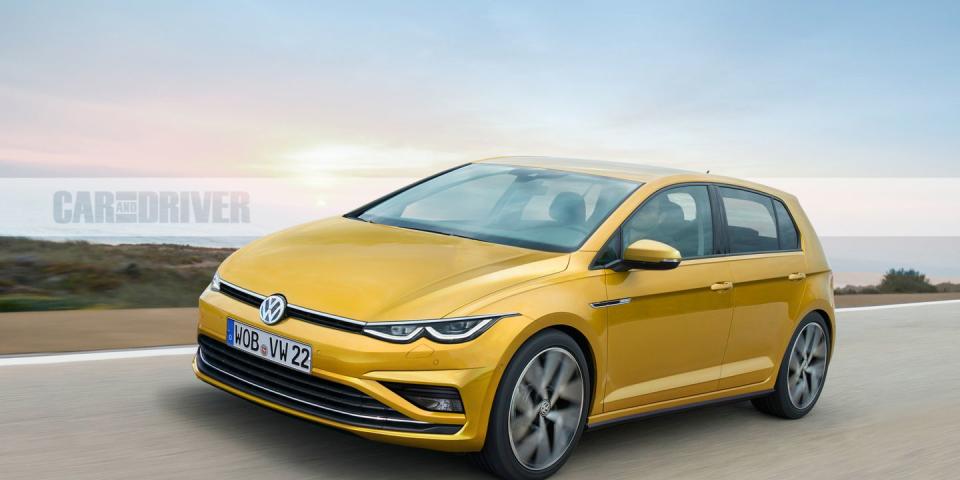2021 Volkswagen Golf: Here's What We Know

UPDATE 12/10/18: We now have confirmation that the next-generation Volkswagen Golf will begin production for the European market in fall 2019, as VW shared more details with investors at an event recently. It also revealed a teaser photo showing the new Golf's silhouette. Expect to wait about a year after the car's European launch for it to reach the U.S., as the new-generation car should reach our shores in calendar-year 2020.

What It Is: The next and eighth generation of the Golf, Volkswagen’s global best-seller. It comes later than expected-VW project development got sidetracked by the diesel scandal-and it represents a relatively small technological step forward from the current Golf Mark 7, which migrated to the MQB platform from the previous model’s PQ35 bones. The eighth-gen Golf retains the current model’s proportions, but it will get a front graphic treatment reminiscent of VWs from a few generations back, marking a departure from the current Golf’s mug. The Golf R will be more dramatically differentiated from the regular lineup than it is today, with a wider body.
Why It Matters: The Golf 8 will need to continue generating the nameplate’s usual large profits, since VW is planning to spend them on the global rollout of electric and electrified vehicles. And the car will need to make gains in efficiency now that the company is slowly weaning itself away from diesel propulsion, a field in which it used to claim leadership. Further, it will need to cater to VW’s traditional owners and aficionados who love their Golfs, SportWagens, GTIs, and Golf Rs just the way they are.
Platform: The upcoming Golf will remain on the MQB transverse-engine platform that underpins today’s Golf and is shared with a number of VW Group vehicles, including the Audi TT and VW’s large SUV, the Atlas. The electronic architecture will be updated with improved hardware to facilitate a user interface employing large screens, swiping and gesture-control functions, and a large optional head-up display.
Powertrain: The next Golf will be offered with a 1.0-liter inline-three (not for the United States), mid-level turbocharged 1.5-liter inline-fours in various states of tune, a turbocharged 2.0-liter inline-four in the GTI, and possibly a 3.0-liter V-6 in the Golf R. Europe will also see 2.0-liter diesel engines. The four-cylinder mills likely will be fitted with a 48-volt hybrid system, while the battery-powered e-Golf will be discontinued in favor of more stand-alone EVs. We expect to see optional all-wheel drive (it will be standard on the Golf R) available on more than just the lifted Alltrack wagon and a choice of six-speed manual or seven-speed dual-clutch automatic transmissions.
Competition: Ford Focus hatchback, Honda Civic hatchback, Infiniti QX30, Mazda 3 hatchback, Mini Cooper 4-Door.
Estimated Arrival and Price: The next Golf will be launched in international markets in the fall of 2019; the U.S. will likely get the car in 2020 as a 2021 model. Pricing is expected to remain close to that of the current Golf lineup, which currently ranges from $20,715 for the entry-level model to $40,195 for the top-of-the-line Golf R.
('You Might Also Like',)


